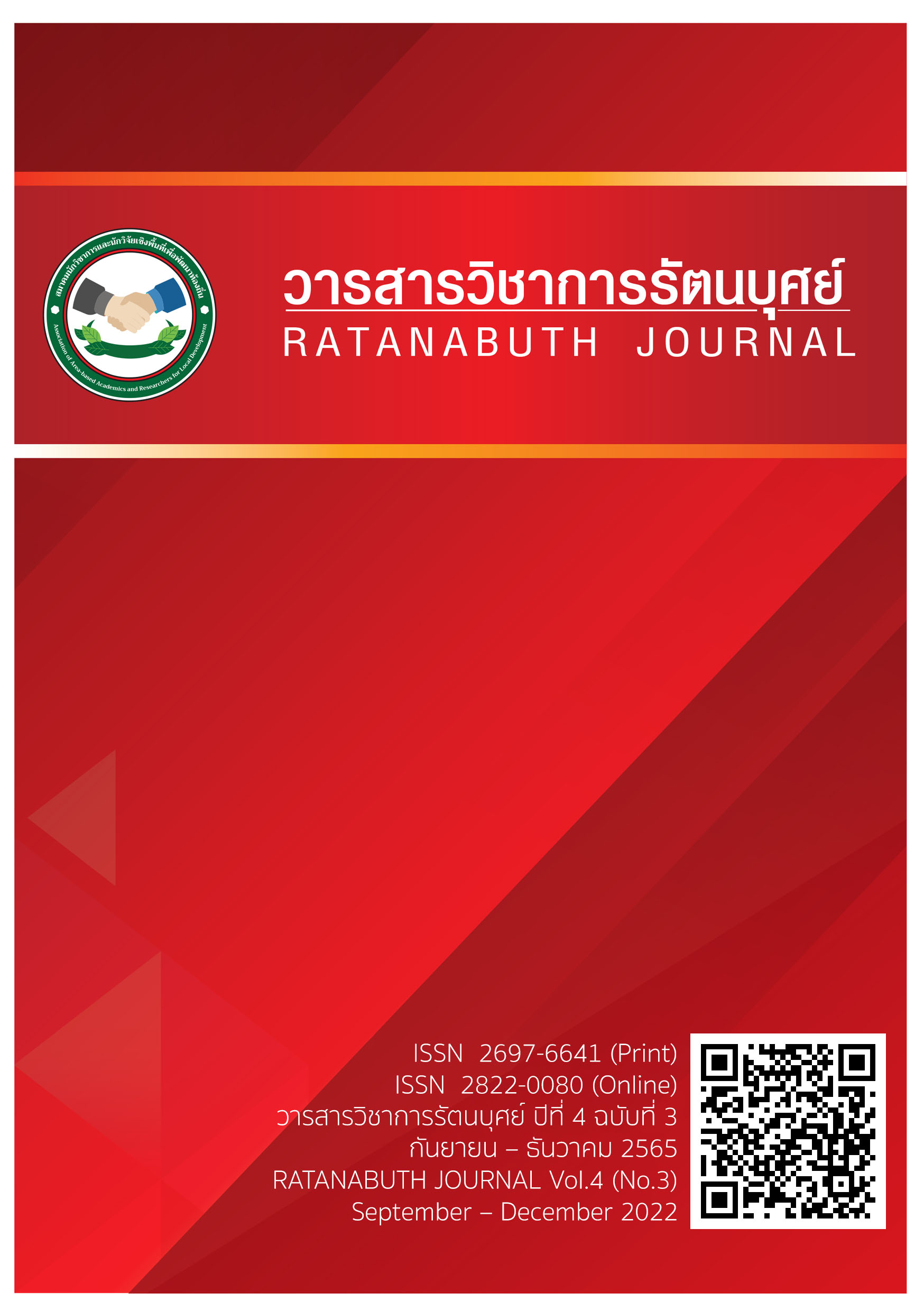ภาวะผู้นำแบบใฝ่บริการของผู้บริหารสถานศึกษา
Main Article Content
บทคัดย่อ
บทความวิชาการนี้ผู้เขียนมีความประสงค์ที่จะนำเสนอถึงลักษณะของผู้บริหารสถานศึกษาที่มีภาวะผู้นำแบบใฝ่บริการ จะให้ความสำคัญและรับรู้ถึงคุณค่าของผู้อื่นและการพัฒนาผู้อื่น มองข้ามผลประโยชน์ส่วนตน คอยช่วยให้ผู้อื่นได้พัฒนา เกิดความเจริญงอกงาม ก้าวหน้า และประสบความสำเร็จ รวมถึงการลด เลิก การบริหารแบบควบคุมสั่งการให้น้อยลง แต่หันมาสร้างโอกาสแห่งการเรียนรู้ และการสร้างความสามารถของครูและบุคลากร เพื่อให้คนเหล่านี้กลายเป็นผู้นำ และนำการเปลี่ยนแปลงที่จะเกิดขึ้นได้อย่างมีผลงานสร้างสรรค์ ประกอบด้วย 5 องค์ประกอบ 1) การเสริมสร้างพลังอำนาจ 2) การบริการ 3) การตระหนักรู้ 4) ความนอบน้อม และ 5) การโน้มน้าวใจ
Article Details

อนุญาตภายใต้เงื่อนไข Creative Commons Attribution-NonCommercial-NoDerivatives 4.0 International License.
เอกสารอ้างอิง
จันทรานี สงวนนาม. (2551). ทฤษฎีและแนวปฏิบัติในการบริหารสถานศึกษา. กรุงเทพมหานคร: บุ๊ค พอยท์.
จิรวรรณ เล่งพานิชย์. (2554). โมเดลสมการโครงสร้างภาวะผู้นำแบบใฝ่บริการของผู้บริหารสถานศึกษาขั้นพื้นฐาน. วิทยานิพนธ์ ศษ.ด. ขอนแก่น: มหาวิทยาลัย ขอนแก่น.
เดชา พนาวรกุล. (2559). ภาวะผู้นำแบบใฝ่บริการ. กรุงเทพมหานคร: มหาวิทยาลัยสมเด็จเจ้าพระยา.
ต้องลักษณ์ บุญธรรม. (2559). การเป็นผู้นำยุคเศรษฐกิจดิจิทัลกับการพัฒนาที่ยั่งยืนขององค์กรทางการศึกษา.วารสารวิชาการครุศาสตร์อุตสาหกรรม พระจอมเกล้าพระนครเหนือ, 7(1), 7-20.
ชัยยนต์ เพาพาน. (2559). ผู้บริหารสถานศึกษายุคใหม่ในศตวรรษที่ 21. วารสารบริหารการศึกษา มหาวิทยาลัยขอนแก่น, 2(1), 4-5.
ธีระรุญเจริญ. (2557). ความเป็นมืออาชีพในการจัดและบริหารการศึกษายุคปฏิรูปการศึกษา(ฉบับปรับปรุง) เพื่อปฏิรูปรอบ 2 และประเมินภายนอกรอบ 3. พิมพ์ครั้งที่ 8. กรุงเทพมหานคร: ข้าวฟ่าง.
พรรษรัตน์ พรมมินทร์. (2563). การพัฒนารูปแบบภาวะผู้นำของผู้บริหารสถานศึกษาในยุคดิจิทัลสังกัดสำนักงานเขตพื้นที่การศึกษามัธยมศึกษา เขต 5 จังหวัดลพบุรี. วารสารสังคมศาสตร์และมานุษยวิทยาเชิงพุทธ,5(8),37 -40.
วิโรจน์ สารรัตนะและคณะ. (2561). ภาวะผู้นำสำหรับศตวรรษที่ 21. วารสารศึกษาศาสตร์ มหาวิทยาลัยนเรศวร.20(1),4-7
สรายุทธ กันหลง. (2553). ยุทธศาสตร์การพัฒนาภาวะผู้นำใฝ่บริการของผู้บริหารมหาวิทยาลัยราชภัฏในภาค ตะวันออกเฉียงเหนือ. วิทยานิพนธ์รัฐประศาสนศาสตรดุษฎีบัณฑิต. กรุงเทพมหานคร: บัณฑิตวิทยาลัย มหาวิทยาลัยราชภัฏวไลยลงกรณ์.
สัมฤทธิ์ กางเพ็ง. (2557). ภาวะผู้นำแบบบริการ แนวคิด ทฤษฎี และงานวิจัย. มหาสารคาม: อภิชาตการพิมพ์.
สัมฤทธิ์ กางเพ็งและสรายุทธ กันหลง. (2553). ภาวะผู้นำใฝ่บริการในองค์การ : แนวคิด หลักการ ทฤษฎี และงานวิจัย. พิมพ์ครั้งที่ 2. ขอนแก่น: คลังนานาวิทยา.
Daft, R.L. (2002). The Leadership Experience. 2nd ed. Fort Worth, Tx: Harcourt, College.
Dennis, R. S. (2004). Development of the servant leadership assessment. Dissertation Abstracts International (UMI No. 3133544).
Dennis, R. S. and Bocarnea, M. (2005). Development of the servant leadership assessment.Leadership & Organizational Development Journal. 26(8).
Greenleaf, R.K. (1970). The servant as leader. Indianapolis. Illinouise : The Robert K. GreenleafCenter.
Greenleaf, R.K. (1977). Servant Leadership. A Journey into the Nature of Legitimate Power and Greatness. NJ: Paulist Press.
Greenleaf, R.K. (2002). Servant Leadership. A Journey into the Nature of Legitimate Power and Greatness. NJ: Paulist Press.
Hughes, RL; Ginnett, RC; and Curphy, GL. (2012). Leadership: Enhancing the Lessons of Experience. 7th ed. New York: McGraw Hill.
Page, D., & Wong, T. P. (1998). A conceptual framework for measuring servant leadership.Unpublished manuscript Langley, Canada: Trinity Western University.
Laub, J. (2004). Organizational Leadership Assessment (OLA) Model. Defining servant leadership and the healthy organization.
Mujis, D. and Garris, A. (2006). Teacher led school improvement: Teacher leadership in the UK. Teaching and Teacher education. (22).
Patterson, K. (2003). Servant leadership: A theoretical model. Doctoral dissertation. Regent University, Virginia Beach, VA. USA.
Poon, R. (2006). A Model for Servant Leadership, Self-Efficacy and Mentorship. Servant Leadership Research Roundtable-August 2006. School of Leadership Studies. Regent
University.pp.1-9. Retrieved from: www.regent. edu/acad/publications/sl_Proceedings/2006/poon.pdf.
Russell, R. F. & Stone. (2002). A review of servant leadership attributes: Developing a Practical Model. Journal of Leadership & Organizational Studies. 23(3).
Sendjaya, S., & James, C.S. (2002). Servant leadership: Its origin, development and application in Organizations. Journal of Leadership and Organization Studies. 9(2).
Spears, L. C.(2004). The Understanding and practice of Servant - leadership. In L.C. Spears,& M. Lawrence (Eds), Practicing servant leadership : Succeeding.
Waddell, T. J. (2009). Servant leadership. Paper presented at the Servant Leadership Research Roundtable, Regent University, Virginia Beach, VA. Retrieved from http://www.regent.edu/acad/sls/ulications/conference proceedings/servant - leadership-roundtable/2006/pdf/waddell.pdf.
Washington, R. R., Sutton, D. C., & Field, S. H. (2006). Individual differences in servant leadership: The roles of values and personality. Leadership & Organization Development Journal. 27(8), 700-716.
Winston, B. E. (2004). Servant leadership at Heritage Bible College: A single-case study.The Leadership & Organization Development Journal, 25(7).
Yukl. G. A. (2002). Leadership in Organizations. Upper Saddle River: Prentice Hall.


